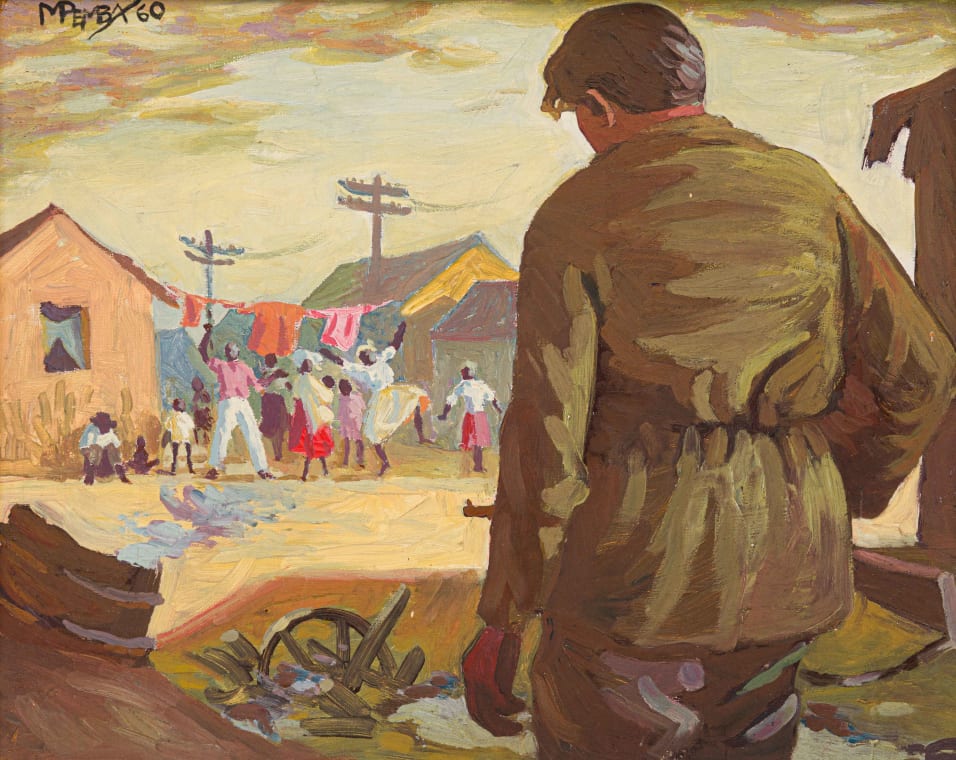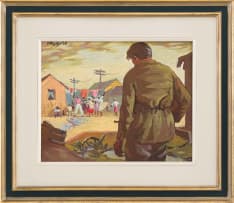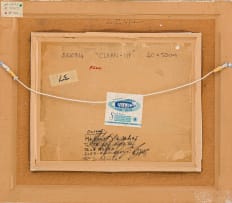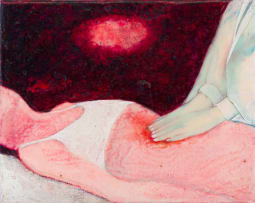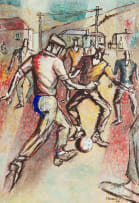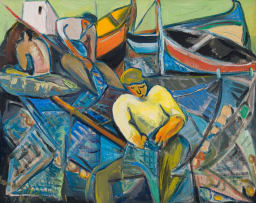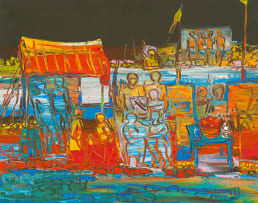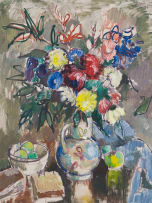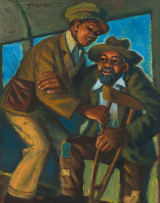Perspectives on Africa
Live Virtual Auction, 17 February 2025
Perspectives on Africa
About the SessionStrauss & Co is pleased to present Perspectives on Africa, a sale that explores the complexity, beauty, and fluidity of perspectives through African art and works by artists with strong ties to the continent. The sale coalesces the rich and varied connections between Africa and its artistic expressions, presenting works that span figuration, landscape, and abstraction, inviting collectors to engage with powerful narratives emerging from Africa's evolving perspectives. The works reflect layered meanings, both as a method of representing depth and dimension as a way of framing our understanding of the world. Work by Contemporary artists reflects on the historical foundations of Modernist artists, exploring themes such as identity, belonging, urbanisation, and re-encounters with tradition, while the sale transitions to Modernist interpretations of Africa, exploring the complexity of colonial encounters, post-independence aspirations, and indigenous practices. Building on Strauss & Co’s commitment to developing a strong local photography market, the sale includes an artist focus on the work of social documentarian Paul Alberts, whose images captured poignant narratives of everyday life, particularly in Cape Town. These works sit alongside David Goldblatt and Zanele Muholi, whose visceral images explore themes of identity, social justice and the multifaceted realities of African life.
Incl. Buyer's Premium & VAT
About this Item
signed and dated 60; inscribed with the title on the reverse
Provenance
Acquired from the artist by Hans J Weber, Port Elizabeth.
Everard Read, Johannesburg, 1991.
Private Collection.
Exhibited
Everard Read, Johannesburg, George Mnyaluza Milwa Pemba, 1991, illustrated in colour in the exhibition catalogue on page 3.
Goodman Gallery, London, Mapping Another Route - South African Artists in a Modern Era, 2 to 26 September 2023.
Literature
Sarah Huddleston (1990) Against All Odds: George Pemba, His Life and Works, Johannesburg: Jonathan Ball Publishers, illustrated in colour on page 116.
Hayden Proud and Barry Feinberg (ed) (1996) George Milwa Mnyaluza Pemba: Exhibition, Cape Town, South African National Gallery, 27.4.-28.7.1996, Cape Town: South African National Gallery, exhibition catalogue, cat. no. 103.
Notes
The present lot was first exhibited in June 1991 by Everard Read, Johannesburg. Jaqueline Nolte argues that this show brought 'Pemba to the attention of an art public.'1 The exhibition resulted from art dealer Hans J Weber visiting George Pemba in Port Elizabeth and purchasing 178 works, which he sold through Everard Read. This important exhibition created attention around Pemba, elevating his career and artistic recognition after significant racial divides had hindered it.2
Pemba painted Clean Up in the wake of the Sharpeville massacre of 1960 when '[t]he effects of apartheid on South African society were becoming evident.'3 Pemba, although not actively involved in political protests, had become increasingly frustrated by 'pass laws' and enraged by injustices. He would have closely followed the events leading up to and during the Sharpeville massacre. Clean Up is emblematic of this event and, through the artist's visual narration, sets the scene by placing a shadowed white soldier in the defeated pose, offset against a spirited and colourful display of township defiance. Pemba's message conveyed through the title speaks poignantly to the tragic wreckage left by a morally indefensible ideology.
During the fifties and sixties leading up to the time the present lot was painted, Pemba had become somewhat frustrated with his career progression. Sarah Huddleston notes, 'while some art critics would argue that his work was easily on par with Gerard Sekoto, he never received the same degree of recognition.'4 He became increasingly eager to grow his career by travelling overseas and joining his friends Ernest Mancoba and Gerard Sekoto in Paris to 'broaden his horizons and experience,'5 he noted earnestly in an interview with the Weekend Post in 1953. Although, in the end, he chose to stay home due to family commitments, like his peers, Pemba was hugely influenced by impressionist and expressionist movements from Europe, like his peers. His work became increasingly expressive and referenced the likes of Renoir, Monet, Degas and Van Gogh as an inspiration.6 Clean Up is an important painting from this period.
1. Jacqueline Nolte (1996) 'Sources and Style in the Oil Paintings of George Milwa Mnyaluza Pemba', in Hayden Proud and Barry Feinberg (eds), George Milwa Mnyaluza Pemba: Exhibition, Cape Town, South African National Gallery, 27.4.-28.7.1996, Cape Town: South African National Gallery, exhibition catalogue, page 34.
2. Ibid.
3. Sarah Hudleston (1996) Against All Odds: George Pemba: His Life and Works, Johannesburg: Jonathan Ball Publishers, page 51.
4. Ibid.
5. Ibid.
6. Jacqueline Nolte (1996) 'Sources and Style in the Oil Paintings of George Milwa Mnyaluza Pemba' in Hayden Proud and Barry Feinberg (eds), George Milwa Mnyaluza Pemba: Exhibition, Cape Town, South African National Gallery, 27.4.-28.7.1996, Cape Town: South African National Gallery, exhibition catalogue, page 35.
View all George Milwa Mnyaluza Pemba lots for sale in this auction
